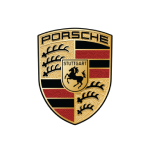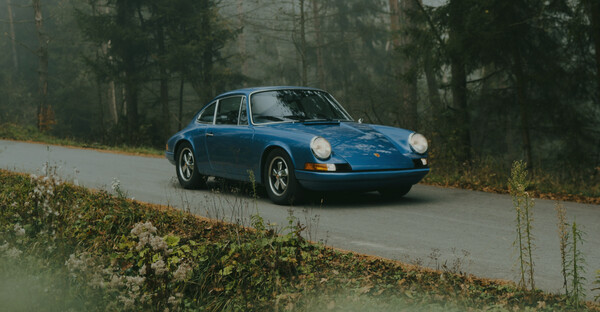Description
Background
Launched in late 1973 and ten years after the original 911, the 2. 7 Carrera along with the rest of the range was receiving its first major facelift, most notably energy absorbing bumpers to meet new safety regulations for the USA, which allowed it to withstand an impact of 5mph without body damage.
With its distinctive safety protruding bumpers and black bellows at their corners providing a solution to the problem, the `impact bumper` 911 was born, paving the way for the appearance of every 911, for the next 15 years.
The US was causing others issues too, with Porsche forced to detune engines to accommodate its standard octane fuel and increase capacity of all models to 2. 7-litres to partially compensate. Even the headline Carrera model had a detuned 175BHP engine to meet the stringent emission requirements.
There was still a cherry on the cake though, in the shape of the European 911 Carrera – or Carrera 2. 7 MFI, as it better known.
To all intent and purpose, it was mechanically very similar to a 1973 2. 7RS with the same 2. 7-litre, 210bhp engine and gearbox, but with the new impact bumpers and a Touring specification. It was even available with the ‘Ducktail’ rear wing, Carrera script and staggered 15in wheels, plus a selection of lurid and typically 70s colours. However, unlike the RS, it was also available in Targa form too.
This high performance normally aspirated 911 was only available for three years and somewhat overshadowed at the time by the new 911 Turbo, before being replaced by the curiously less powerful Carrera 3. 0.
Equally unusual for many years, it was considered in no way particularly special and priced accordingly. More recently, the market has woken up to this anomaly and Carrera 2. 7 MFI prices in line with its RS roots, have entered a new and more befitting zone and if you break it down to yearly production numbers, they are rarer too.
Which brings us to this excellent example of Carrera 2. 7 MFI perfection.
A Porsche Certificate of Authenticity, states production completion on 1st February 1975, a LHD example finished in black for the home market of Deutschand and we are pleased to confirm that all numbers match the paper correspondence with the car.
After an extensive and documented restoration by renowned German Porsche Specialist Roock in 2016, it was purchased by the proprietor of UK based Porsche mecca Karmann Konnection for his own personal use in 2018.
For those unfamiliar with Roock, they have been part of the Porsche scene since the early 80s and can look back fondly on national and international successes in motorsport with Porsche, being one of their most successful privateer teams.
Today ROOCK relies on state-of-the-art work processes and strict quality control – which was confirmed by TÜV Rheinland as early as 2002 with the certification according to DIN EN ISO 9001: 2000. In other words, if you are looking for the credentials of a company to restore your 911, they probably don’t come much higher. All documentation in German relating to the car is available to view alongside the car at our premises in Little Maplestead.
More recently in the UK, Neil Bainbridge was tasked with rebuilding the MFI pump in February 2024 and the car produced a healthy 212. 8 BHP when tuned on the rolling road.
Our Thoughts
As stated at the beginning, it has always been a mystery to us why these cars have been viewed so differently in the past to the early 73 RS, particularly when the driving experience is so similar to a Touring version of that very car. Today the perception is changing, and with that so have values, and correspondingly importance of provenance. This example has been confirmed as a matching number example and with a restoration carried out by one of the best names in the business. Unsurprisingly, it also drives as well as it presents and would make a fantastic addition to a significant collection, or just as a single car to enjoy and experience why the Carrera 2. 7 MFI is still one of the best 911s the company has ever made.















